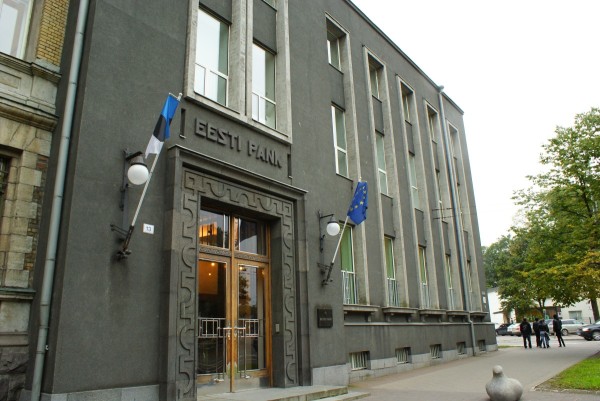Sean McLachlan Feb 20th 2013
Tallinn is an old city, and like many old cities it has its share of secrets. Stories of ghosts, buried treasure and hidden tunnels add to the atmosphere of the medieval streets.
For a couple of years, one of those secrets was revealed when the city opened up the Bastion Tunnels. These corridors were built by Estonia's Swedish rulers in the 1670s and ran under the earthen bastions that protected the city. These bastions were an improvement over Tallinn's stone walls, which were now outdated in the age of artillery. The tunnels allowed for the rapid and safe transport of troops from one part of the defenses to the other.
The Bastion Tunnels were used by the soldiers for a time and then were abandoned to the rats and spiders. Abandoned, but not forgotten. The entrances were still visible yet few dared to go down there. Rumors of buried treasure arose but most people were too afraid to venture into the dank, dark tunnels to search for it.
In the more practical 20th century the tunnels got new life. In the 1930s everyone could see that war was coming, and Estonia's uncomfortable position next to the Soviet Union made it an obvious target. The government reopened the tunnels as bomb shelters. Today, a section of the tunnels is preserved to commemorate this era, with vintage posters showing what to do in case of an air raid, and some frightened dummies set up in period clothing.
The Soviets occupied Estonia in 1940, only to be kicked out by the Germans the following year. They were hardly a liberating force, however, and the partisans who had been fighting the Soviets soon turned their guns on the Nazis. Meanwhile the Soviets launched bombing raids and the citizens of Tallinn hid in the tunnels for protection. Luckily most of the historic city was preserved, but as you walk around you can spot patches where all the buildings are new. This is thanks to the Soviets.
The Estonian resistance actually took advantage of the bombings to strike a blow against their occupiers. Estonians tell the story that the German high officers all stayed at a particular posh hotel. The resistance hoped it would get hit by a bomb and preeminently smuggled ammunition into the cellar. A Soviet bomb hit the hotel and BOOM ... no more Nazi officers.
The Soviets eventually retook Estonia and it would remain under Soviet rule until 1991. During that time the tunnels were used again as a bomb shelter. Visitors can see period equipment like radios, air circulation machines and radiation suits. There's even an old Soviet latrine that still stinks. The photo above shows an Estonian family hoping their suits will stop the radiation from an American nuclear strike. That green bag between the mother and her child is for a baby. I'll leave it to you to guess whether that contraption would have actually worked.
Eventually the Soviets, too, abandoned the tunnels. Estonia had nuclear missiles positioned all over the country so it was on the U.S. shortlist for bombing. The Soviets must have realized that some 17th century tunnels weren't going to protect anyone from a direct hit, so the tunnels once again reverted to a home for rats and spiders.
Then, in the 1980s and '90s, a new group took over the tunnels – the punks. Punk rock was illegal in the Soviet Union. That whole defy-the-system ethos didn't sit too well with the Communist Party. So the punks went underground, literally. They spray painted the walls, threw parties, drank, took drugs and generally had a good time while thumbing their noses at authority. The police harassed and often arrested punks on the street but never chased them into the tunnels. Our tour guide told us that the tunnels had become infested with fleas and the cops didn't want to catch bugs along with punks.
Independence came in 1991 and the punks could enjoy sunlight again. The economy wasn't doing so well and the homeless population swelled. They took over the tunnels and made them as comfortable as they could. Eventually, of course, they were kicked out so the tunnels could be restored and opened as a tourist site. Our tour guide didn't know what happened to the homeless people.
The Bastion Tunnels make for an interesting tour, yet I feel that the city missed a great opportunity. The punk graffiti was all painted over and eventually replaced with faux graffiti in the punk style. I would have much preferred to have seen graffiti written by some crusty old punk from the days when defying authority could land you in jail instead of just angering parents. It would have also been nice if they could have employed some of the homeless people as tour guides. This would have given them work and given visitors an insight into what it was like to live underneath the city.
And the "Time Machine" ride they have is just too cheesy to waste bandwidth on ...
Still, the Bastion Tunnels are one of the most interesting attractions in Tallinn. They're entered through the cellar of the Kiek in de Kök tower. The name means "peek into the kitchen" because the tower so dominated the town that it was said the watchmen could look down the chimneys of the houses and see what was cooking! The tower has a collection of arms and armor as well as a space for photographic exhibitions. From the top you get a fine view of Tallinn's Old Town.
First posted here: http://www.gadling.com/2013/02...
Visit link for photo gallery!
The Secret Tunnels Under Tallinn
Eestlased Eestis | 20 Feb 2013 | EWR
Eestlased Eestis
TRENDING
























